Sometimes hot summer nights leave you tossing and turning on sheets that feel itchy and clingy instead of soft and breathable. If you struggle with sleep comfort, you may want to invest in ultra-luxurious Pima cotton bedding. Of course, if you have never heard of this unique, high-end type of material, you’re probably wondering, what is Pima cotton fabric?
Pima cotton is made out of a special species of cotton plant that grows extra-long staples. These longer staples twist into silky, strong yarns that create a uniquely soft and luxurious fabric. Popular uses of Pima fabric include bed sheets, sleepwear, and clothing.
In this article, you will learn where Pima cotton comes from. You will also find out what makes it different from other types of cotton. Finally, you will discover the most popular uses of this luxury material!
What is Pima Cotton Fabric?
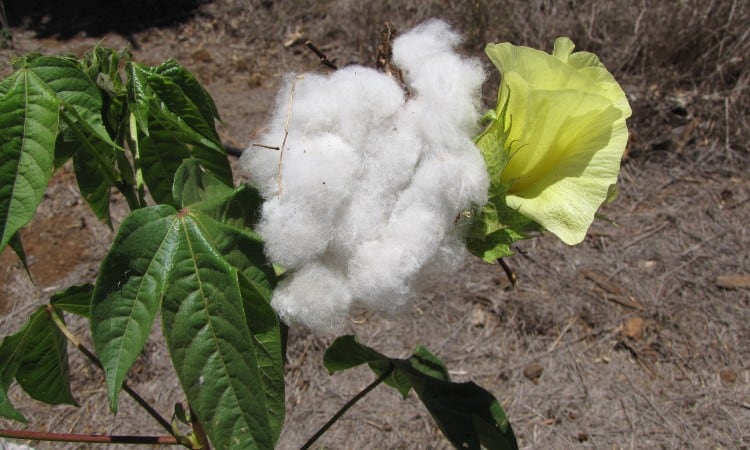
Pima cotton comes from a special cotton plant that grows extra-long staples, or fibers, in its boll. The long staples make fine, strong yarns that create a luxuriously soft fabric. This type of plant makes up less than 5% of all cotton grown in the world every year!
Most of the cotton grown around the world comes from a hardier version of a cotton plant from the species Gossypium hirsutum. This includes Upland cotton, which is the type used in most t-shirts and bedding you will see on store shelves today.
In contrast, Pima cotton comes from a different species of plant, known as Gossypium barbadense. This plant grows better in hot or tropical conditions and requires delicate tending and hand-picking.
While this species did grow indigenously in a few parts of the world like South America, it came to worldwide recognition when English Colonists imported it to the West Indies. This led to a vast increase in the popularity of long-staple cotton in the Western world.
Tragically this bright time in the history of cotton was made possible because the colonists also imported slaves from Africa to tend and harvest the cotton. This led to a very dark period in the history of Barbados. This level of cotton production also didn’t last very long because sugar cane production quickly outpaced cotton as a West Indies money maker.
So, where did Pima cotton come from? Like several kinds of luxury cotton, Pima technically comes from the same G. barbadense plant. It gets its unique name from a more recent period in history, though!
In the early 1900s, the United States had an impressive cotton production that rivaled any other nation in the world. The country wanted to up its game in the luxury cotton market, so they investigated Egyptian cotton to see what made it so different. With some help from Egypt, a small amount of G. barbadense found a new home in the States.
As a fun fact for you, the name of this type of cotton came from the local Pima Indians who helped the government farm the new species of cotton.
Where is Pima Cotton Grown?
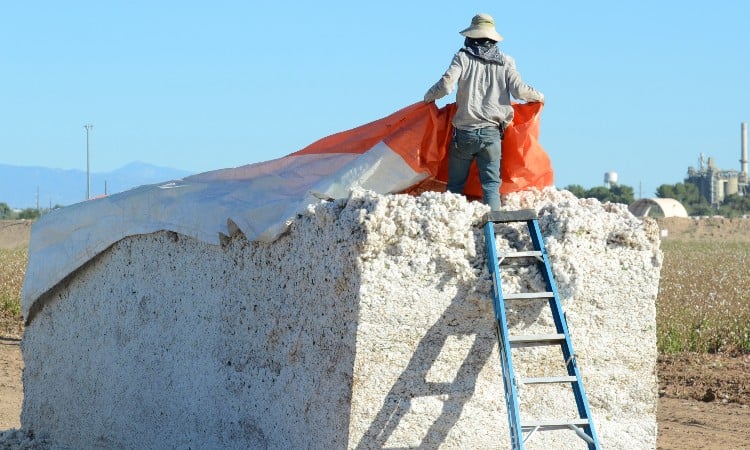
While “Pima” cotton specifically originated in the Southern United States, today, most production occurs in China and India. Pima cotton needs hot temperatures to thrive. It grows primarily in some areas of the Southwest United States, in Peru, in China, and India.
If Pima cotton describes a type of G. barbadense grown and developed in the United States, why does it now grow all around the world? Because it sells well, of course! Just like Egyptian cotton, the name has come to mean something to consumers.
Unfortunately, this also means that many products may claim a designation of Pima or Egyptian cotton but bear no resemblance to true G. barbadense standards. You can learn more about this later in this article, but one key thing to keep in mind about Pima cotton is that you need to verify where the cotton came from to know that you are buying a real deal!
How is Pima Cotton Produced?
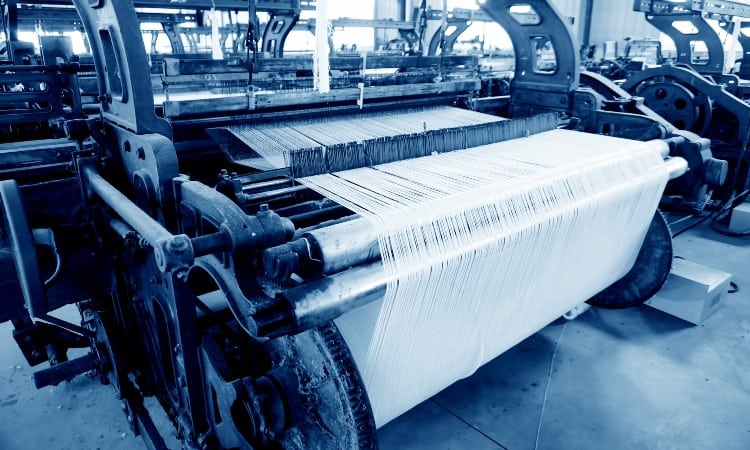
The main difference in Pima cotton production is that it requires hand-picking for the best results. Most commercial cotton growers use machines to pry away the fluffy cotton ball and then sift out the cotton seeds from the fibers. The delicate G. barbadense plants, however, need a more hands-on approach for the best results.
The delicacy of the process is one of the reasons why so little G. barbadense is grown worldwide and why Pima cotton remains a luxury item!
Aside from handpicking, most of the production process looks fairly similar to how any type of cotton is manufactured.
First, the cotton balls get packed into bales, which go to a special area of production factories called the opening room. At this point, machines do take over! The factory machines undo the bales to scatter cotton bolls around.
Then a mixing machine prepares the bolls for carding, a process that untangles the fibers and arranges them into roughly parallel clumps called tows.
A combing machine turns the tows into neat, silky cotton ropes free of any lingering burrs, bugs, or other gross bits!
These loose ropes wrap around large bobbins for transport to more factory machines. This final batch of machines will twist the ropes into yarns–what we think of as threads. These fine, delicate threads will then go to a weaving factory to get woven into fabric!
You will often find Pima cotton in a plain weave that has a basic over-under thread pattern. Percale and satin weave also make popular types of Pima cotton bedding because of their silkier feel.
Key Pima Cotton Properties
The extra-long fibers in Pima cotton give it unique properties that regular cotton does not have. It is most known for its incredible softness, but it also has greater strength and durability than average cotton! Of course, like most rare, luxury items, it also comes with a high price tag.
Breathable
 Cotton is one of the most breathable materials in the world. Its airy breathability comes from a couple of different factors.
Cotton is one of the most breathable materials in the world. Its airy breathability comes from a couple of different factors.
First, cotton fibers have a corkscrew-like shape. This prevents the tiny fibers from clumping together tightly within a thread. Instead, lots of open space exists between the fibers, allowing air to flow through!
On top of this, cotton has excellent absorbent properties. If you get hot and sweaty, cotton will quickly absorb the sweat, removing it from your skin. This allows your skin to cool down easily.
The type of weave used will also make cotton more or less breathable. More space between the yarns makes a more breathable fabric, through a denser weave typically makes the cotton feel softer.
Softness
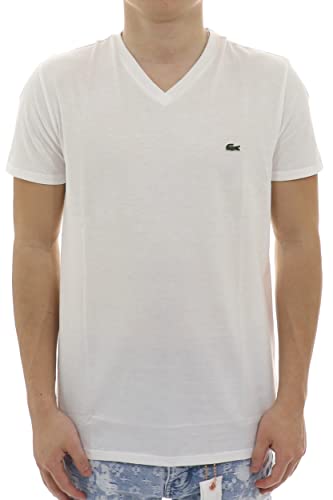 Pima cotton’s most defining characteristic is its incredibly soft texture. This softness all comes down to the length of the cotton staples produced by the special G. barbadense cotton plant.
Pima cotton’s most defining characteristic is its incredibly soft texture. This softness all comes down to the length of the cotton staples produced by the special G. barbadense cotton plant.
Cotton bolls look cute and fluffy, but they contain as many as 250,000 fibers! The big difference with Pima cotton lies in the length of these fibers. To classify as extra-long-staple cotton, each fiber in the fluffy snowball-like cotton boll must measure at least one and three-eights of an inch to as much as two inches.
In contrast, regular cotton staples measure one and one-eighth of an inch at most. If this seems like a tiny difference to you, you have never compared the feel of regular cotton and Pima cotton! The longer fibers make fabric that has a much greater softness and strength.
Strength
Extra-long fibers give Pima cotton yarns a much greater tensile strength, too! Tensile strength is another one of Pima cotton’s best-known properties. Its long, fine fibers create yarns that don’t rip or tear easily.
You can easily understand the mechanics of this. When short fibers twist into yarn, each tiny fiber only twists a few times before its loose end springs free of the thread. When long fibers twist together, they can spin around and around each other many times, creating a much stronger yarn!
Durability
Cotton has pretty great durability in general, but Pima cotton typically has a 50% longer lifespan than regular short-staple cotton! Its fine, strong yarns make it resistant to fraying or tearing. Plus, its natural fibers survive lots of washing without taking any damage.
Another reason Pima cotton lasts longer is that it resists pilling. Short-staple cotton has many more tiny fibers ready to break free from the fabric and bunch up as pills on top of the material. Pima cotton’s long fibers do not break or pill nearly as easily!
Wrinkle-Resistant
Pima cotton’s long fibers also make it more wrinkle-resistant than regular cotton. Cotton does tend to wrinkle because the hydrogen bonds in it react to water, but Pima cotton has a softer, sleeker surface that wrinkles a little less. It will also soften over time without losing its strength and will wrinkle less after several washes.
The good news is that you can safely iron your Pima cotton if you want to erase all wrinkles!
Easy Care
You can use your washing machine and dryer to care for your Pima cotton clothes, towels, or bedding without worry! Despite its delicate origins and soft texture, this fabric is quite tough.
You can wash Pima cotton in cool or warm water without worrying about it shrinking, pilling, or fading. You can also place it in the dyer, though you should not use the highest heat setting.
The only thing you need to avoid when caring for Pima cotton is washing it in hot water. Because cotton absorbs water so easily, hot water can cause it to shrink.
Expensive
Pima cotton usually costs roughly twice as much as regular short-staple cotton. As with any luxury item, Pima cotton can demand a high price because it is such a rare commodity.
If you want to buy a set of Pima cotton bed sheets, you can expect to pay anywhere from $100-$200. To put this in perspective, you can typically find an average set of 100% cotton sheets for about $50, depending on the brand!
Now, not every product that claims to contain Pima cotton actually does. If you see sheets or clothing at a bargain price claiming to contain Pima cotton, it’s probably a scam! This is one key thing to look for in your quest for quality fabric.
Pima Cotton Vs Organic Cotton
Not all organic cotton is Pima cotton, but Pima cotton can be organic! Is that confusing or what?
The term “organic”’ describes a growing process that does not use dangerous pesticides or chemicals. You can find many different kinds of organic cottons, such as organic Egyptian cotton, organic upland cotton, and organic Pima cotton.
An organic growth process is much better for the environment, and ultimately, for you as the consumer! But this process also costs more. Because of this, less than 1% of all the cotton grown in the world is organic!
Organic growth processes don’t allow pesticides, so farmers have to weed by hand. They also have to use techniques like crop rotation to prevent anything in the soil from harming the cotton in the long term. Growing organically protects the earth, but it impacts the bottom line for cotton manufacturers significantly.
What is the Difference Between Pima and Egyptian Cotton?
 Pima and Egyptian cotton come from the G. barbadense plant, but Egyptian cotton is only grown in Egypt. Egyptian cotton also has a longer growing season because it grows in such a hot climate. Both types of material are rare luxury items known for their extra-long staples and soft texture.
Pima and Egyptian cotton come from the G. barbadense plant, but Egyptian cotton is only grown in Egypt. Egyptian cotton also has a longer growing season because it grows in such a hot climate. Both types of material are rare luxury items known for their extra-long staples and soft texture.
You will find many disagreements over which type of cotton is the softest, the best, and the rarest. Brands that sell Egyptian cotton products understandably claim that Egyptian cotton is the best, while Pima cotton sellers argue that Pima wins this competition!
That said, Egyptian cotton does often cost even more than Pima cotton. To learn more check out my article about the differences between Pima cotton and Egyptian cotton.
Pima vs Supima Cotton
 Supima is a sub-category of Pima cotton that is even more rare and costly. The name means “superior Pima.” This type of cotton is trademarked and closely monitored and can only be grown in a few parts of the United States.
Supima is a sub-category of Pima cotton that is even more rare and costly. The name means “superior Pima.” This type of cotton is trademarked and closely monitored and can only be grown in a few parts of the United States.
Supima is a verifiable, official form of Pima cotton that emerged to protect against all the faux-Pima cotton products flooding the market. Pima cotton already has limited production, as you now know. Supima cotton makes up less than 1% of all the cotton grown worldwide!
The big downside to Supima cotton is that it costs at least twice as much as Pima cotton. To learn more explore my post Pima vs Supima Cotton.
Pima Cotton Vs Combed Cotton
Pima cotton is almost always combed as part of its production process, making it a type of combed cotton. That said, it is usually far superior to regular combed cotton.
The cotton manufacturing process sometimes includes combing, making the fibers smooth and less likely to break free and pill. For this reason, 100% combed cotton will feel softer and nicer than uncombed cotton.
Of course, Pima cotton’s extra-long staples comb out even finer and sleeker than regular Upland cotton’s short staples. This means that in a comparison of combed Upland cotton and combed Pima cotton, Pima will always win!
Why is Pima Cotton Better?
Pima cotton competes with Egyptian and Supima cotton as the best-quality, most luxurious cotton in the world. It offers a much softer texture and greater strength and durability than regular short-staple cotton. It also uses more hands-on growing methods that do not harm the environment as much as regular cotton production.
If you tried out a set of Pima cotton bedsheets one night and then slept on a set of short-staple cotton bedsheets the next night, you would notice that the Pima cotton feels much silkier, smoother, and softer! The regular cotton bedding will have a crisp, nice feel, but it won’t have silky softness.
Here’s the catch, though: today, tons of sellers claim to offer Pima cotton. But are you really getting what you think you’re paying for?
Recent studies argue that close to 90% of supposedly Egyptian or Pima cotton products contain either a blend of fibers or no luxury fibers at all!
How do you learn the difference? Well, the first clue is in the pricing. Don’t fall into the trap of bargain pricing! Pima cotton costs more because of its higher quality.
The second, more time-intensive option you have is to track down fabric certifications. Cotton growers who produce the special G. barbadense species of cotton can acquire certification. Reputable brands and sellers will promote this certification and make a big deal out of how pure the Pima cotton in their products is!
Finally, you can perform the touch test! If you’re at the store, you can always compare a supposedly Pima cotton item with a regular cotton item and see if it feels softer!
Popular Uses of Pima Cotton
Pima cotton makes luxury bedding, absorbent towels, ultra-soft clothing, and cozy sleepwear. Check out these products to get an idea of where you can expect to find Pima cotton!
Clothes
Popular brands such as Land’s End and L.L. Bean sell clothing made from Pima cotton. You can also find many specialized brands that focus just on selling Peruvian Pima cotton products, for example. These sellers will promote their certifications to ensure the purity of the cotton in their products.
You can expect Pima cotton t-shirts and sundresses to feel light and silky against your skin!
Deep Scoop Neck Tee, 100% Organic Peruvian Pima Cotton
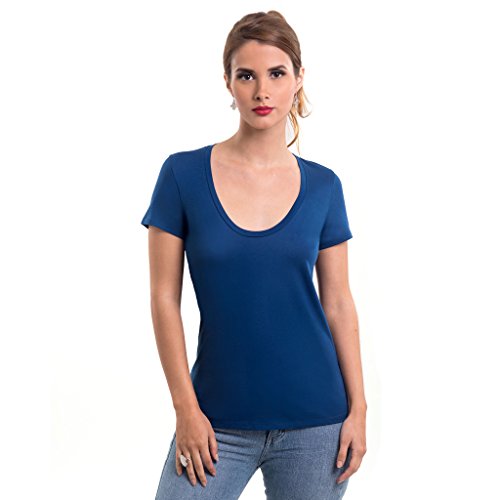 This elegant scoop-necked t-shirt will feel soft and clingy. It comes in five rich colors ranging from dark blue to peach and features a super lightweight jersey knit. Most importantly, the cotton is 100% Peruvian Pima cotton, so you know the material will have an incredibly soft texture!
This elegant scoop-necked t-shirt will feel soft and clingy. It comes in five rich colors ranging from dark blue to peach and features a super lightweight jersey knit. Most importantly, the cotton is 100% Peruvian Pima cotton, so you know the material will have an incredibly soft texture!
This ethically sourced fabric will make you feel good inside and out! Plus, the durable material will handle lots of washes just fine, so you can wear the tee as often as you want!
Sheets
Sheets and bedding make up one of the most popular uses of Pima cotton. You probably love cotton sheets for their crisp breathability, but Pima cotton offers that and a remarkable silky texture!
100% Peruvian Pima Cotton Queen Bed Sheet Set
 These sheets provide a luxury hotel level of softness and quality as well as multiple certifications for authenticity. You can buy this sheet set in fourteen different styles, from a jewel-toned burgundy to cute stripes! You can also select from five different sizing options to get the perfect fit for your bed.
These sheets provide a luxury hotel level of softness and quality as well as multiple certifications for authenticity. You can buy this sheet set in fourteen different styles, from a jewel-toned burgundy to cute stripes! You can also select from five different sizing options to get the perfect fit for your bed.
Plus, these sheets offer a 415 thread count and ultra-fine Peruvian Pima cotton in a percale weave! You may never want to leave your bed again after making this purchase!
Sleepwear
Once you discover that you like sleeping on Pima cotton, you may want to sleep in it, too! You can find quite a wide range of Pima cotton sleepwear for sale because of its soft, cozy feel.
Women’s Pajamas Set
 Made from 100% Pima cotton, this cozy loungewear set will make it hard to get up in the morning! This set comes with a wide-necked, long-sleeved top and comfy elastic-waisted bottoms.
Made from 100% Pima cotton, this cozy loungewear set will make it hard to get up in the morning! This set comes with a wide-necked, long-sleeved top and comfy elastic-waisted bottoms.
This high-quality brand ensures no scratchy add ons like labels, lace, or buttons in uncomfortable places!
These pajamas may give you the softest sleep experience of your life, but they do come with a high price tag! The sellers guarantee that their product contains only Peruvian Pima cotton, though, which justifies the cost.
Towels
Pima cotton also makes great towels because it combines a soft, nonabrasive texture with extreme absorbency. You may find that Pima cotton towels feel like plush velvet to the touch!
Pinzon 6 Piece Bath Towel Set
 This six-piece set features two bath towels, two hand towels, and two washcloths in your choice of either navy blue or spa blue. Besides including only 100% American-grown Pima cotton, these towels use a plush weave with 1.5 million loops in each towel!
This six-piece set features two bath towels, two hand towels, and two washcloths in your choice of either navy blue or spa blue. Besides including only 100% American-grown Pima cotton, these towels use a plush weave with 1.5 million loops in each towel!
You can also check the weight of the towel to determine its quality, and these bath towels come in at an impressive 580 GSM (grams per square meter)! This dense wear will offer extra absorbency as well as the softness of a high thread count.
Conclusion
Pima cotton has extra-long staples that give it fine, strong threads. These threads make super-soft fabric. Pima cotton and Egyptian cotton come from the same type of cotton plant and are both considered luxury materials.
Pima cotton makes many popular products such as bedsheets, sleepwear, and bath towels. Though these products typically cost nearly double the cost of regular cotton items, they provide a much softer texture!
Have you ever tried Pima cotton bedding? Did you like it? Leave a comment below to let us know!